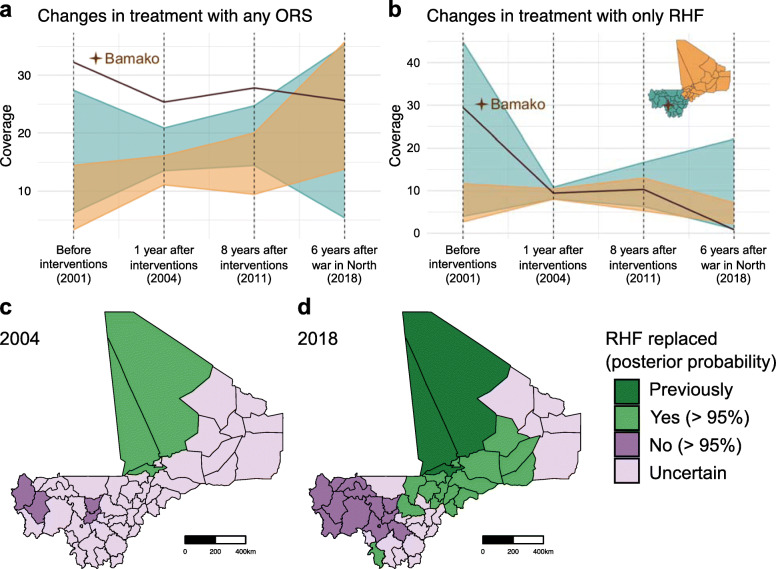Fig. 3.
Changes over time in oral rehydration therapies by cercle in Mali. a, b Percent of children that received any ORS (a) or only RHF (b) at four time points during the study: before interventions were implemented in south Mali (2001), 1 year after interventions (2004), 8 years after interventions (2011), and 6 years after the war in North Mali (2018). Colored bands show the range of the mean estimates across northern cercles in orange, southern cercles in blue, and the capital city Bamako in brown and highlighted with a star. Note that in order to clearly illustrate trends in ORS and RHF, scales on the y-axis differ between panels a and b. In addition, in order to focus on changes within three distinct time periods, the x-axis is not to scale by year. c, d RHF replacement by cercle from 2001 to 2004 (c) and 2001 to 2018 (d). Cercles with > 95% posterior probability that RHF was replaced by ORS are shown in green. Light green indicates RHF was replaced by the indicated date, and dark green indicates RHF had already been replaced by the previous date. Cercles where there was greater than 95% posterior probability that RHF was not replaced are shown in darker purple. Cercles where our estimates had higher uncertainty (< 95% posterior probability that RHF was either replaced or not replaced) are shown in light purple. Cercles with > 95% posterior probability that RHF was not replaced by ORS are shown in dark purple

